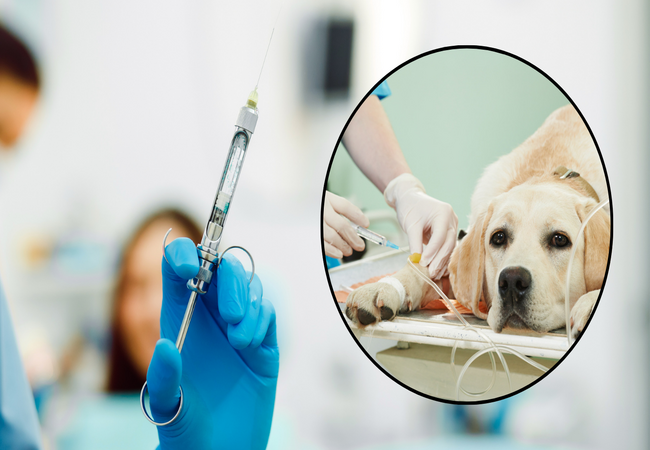Vet‑Approved 2025 Guide: Anesthesia for Dogs – What It Is, Risks & Recovery💉

In this article
Vet‑Approved 2025 Guide: Anesthesia for Dogs – What It Is, Risks & Recovery💉
By Dr. Duncan Houston BVSc
Anesthesia enables safe veterinary procedures by ensuring your dog feels no pain and remains still. This comprehensive 2025 guide covers all aspects—types, benefits, preparation, safety, risks, recovery, and comforting supports like Ask A Vet, to ease your pup’s experience. 🐶✨
🔍 What Is Anesthesia?
“Anesthesia” literally means “without sensation”—it's used to eliminate pain and awareness during procedures. General anesthesia induces unconsciousness, while sedation, local, and regional techniques help manage pain for minor or complex procedures.
🧪 Main Types of Anesthesia
- General anesthesia: causes complete unconsciousness and analgesia, used for most surgeries.
- Sedation: calms and relaxes, but may still allow some reaction; useful for minor procedures.
- Local anesthesia: numbs a small, specific area (e.g., lidocaine for skin biopsies).
- Regional anesthesia: blocks large areas, like an epidural for hind limb surgeries.
🔄 Balanced Anesthesia Protocols
Modern anesthesia combines sedatives, systemic or injectable agents (like propofol or ketamine), and inhalants (e.g., isoflurane or sevoflurane) for smooth induction and precise control.
⚙️ How It Works in Practice
- Pre‑anesthetic medications: calm and reduce pain.
- Induction: IV injection of agents like propofol.
- Intubation: tube placed to protect the airway and deliver inhaled anesthetic and oxygen.
- Maintenance: inhalant gases regulate depth and ensure safety.
📊 Why Use Anesthesia?
- No pain, memory, or movement during surgery.
- Safely perform complex procedures—from spays to dental work.
- Enhances accuracy in diagnostics like biopsies or imaging.
🧠 Preparation & Safety Measures
- Pre-op exams: physical checks, bloodwork, urinalysis to assess health.
- Special considerations for breeds: Greyhounds, brachycephalic dogs, and those with MDR1 mutation need tailored protocols.
- Fasting: no food after midnight; water may be allowed.
- IV catheter & fluids: ensure quick drug access and maintain circulatory stability.
- Monitoring: heart rate, oxygen, blood pressure, ECG, temperature throughout.
⚠️ Common & Rare Risks
- Minor: nausea, injection site swelling, mild hypothermia, grogginess.
- Serious: aspiration pneumonia, allergic reactions, cardiovascular/respiratory arrest, seizures—though rare.
- Mortality rate: ~0.1–0.17% for healthy dogs; higher with comorbidities.
🩺 Post‑Anesthesia Recovery
After surgery, dogs are monitored until they wake up: shivering, mild vocalizing, and dehydration are common. Most recover within 1–2 hours but may remain groggy for 24 hrs. Provide a warm, quiet area and restrict activity. Monitor eating, drinking, urination, and stool—notify the vet if problems persist beyond 24–48 hrs.
💬 When to Contact the Vet
- Persistent vomiting, difficulty breathing, or pale gums.
- No appetite or not drinking within 24 hrs.
- Unsteady walking or seizures post‑anesthesia.
- Signs of pain—whining, shaking, hiding.
🛠️ Recovery‑Support Tools
- Ask A Vet: Remote check‑ins to assess recovery progress or meds.
🏁 Final Thoughts
Anesthesia today is extremely safe and vital for modern veterinary care. Through balanced protocols, thorough monitoring, and thoughtful recovery, most dogs tolerate anesthesia well. Tools like Ask A Vet,offer caring support each step of the way. If your pup is scheduled for a procedure, talk openly with your vet about anesthesia to ensure a smooth, pain‑free experience. 🐾❤️


